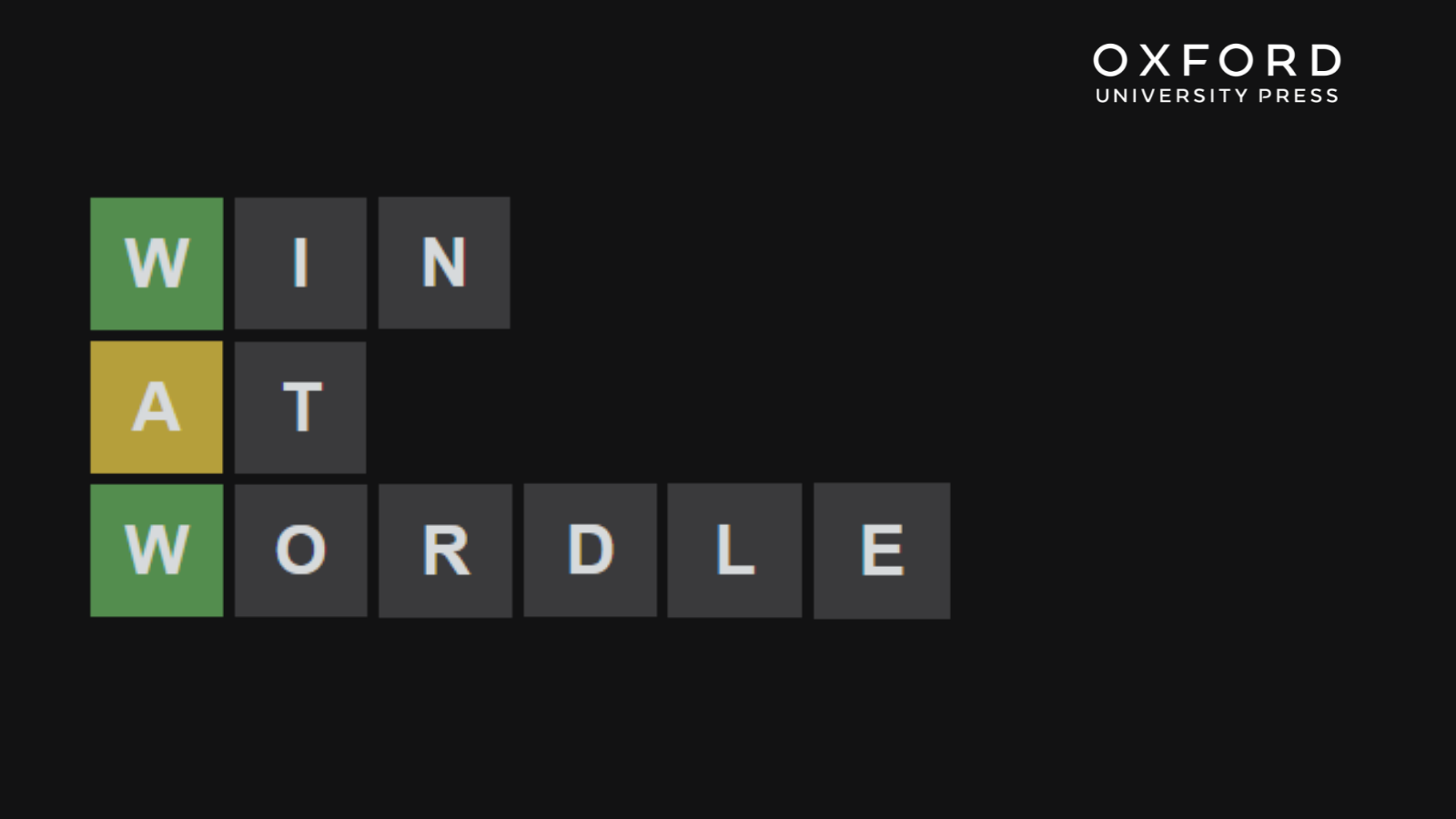
Wordle is an online word game that was originally created by software engineer Josh Wardle for his partner and, since its creation, it has soared in popularity. Millions of people (including me) are now joining the fun, confusing our family and friends by posting multicoloured squares on newsfeeds everywhere. And it’s free to play – all you need is internet access!
Word games are a great way to really motivate language learners (or challenge your own English language knowledge!). Maybe your students are already playing! Wordle is a game that can help expand vocabulary (of five-letter words specifically), and knowing a few secrets about the structure of the English language can take your strategy to the next level!
How do you play Wordle?
For those of you who aren’t playing Wordle yet, the game is simple. Each day there is a new five-letter word hidden by five squares. Your job is to guess the word.
You have six guesses to guess correctly with hints to help you. If you guess a letter correctly and it is in the right place of the final word, it will appear green. If you guess a letter but it appears yellow, this means the final word has this letter, but it is in a different place – try placing it somewhere else. There is only one word to guess every day and you can share your results without giving the game away.
We’ve pulled together some English Language tips to help you with your Wordle guesses.
1) Have you tried all the vowels?
Every five-letter word in the English language will have at least one vowel (a,e,i,o,u) or the letter ‘y’ (which is sometimes referred to as a vowel and sometimes a consonant). In fact, ‘e’ is the most commonly occurring letter in English! Sometimes there is more than one vowel in a word. Vowels help to break down a word, helping with our pronunciation.
An example of this using ‘u’ and ‘a’ would be:
Sugar (A1): a sweet substance, often in the form of white or brown crystals, made from the juices of various plants, used in cooking or to make tea, coffee, etc. sweeter.
2) Consider the end first!
One way of playing Wordle is to look at how the word ends and work backwards. Popular ending combinations for shorter words include ‘er’, ‘th’, ‘ed’, ‘ss’, ‘al’, ‘ly’, and ‘ie’. An example of this would be:
Birth (A2): the time when a baby is born; the process of being born.
3) Watch out for double letters!
Sometimes there will be more than one instance of a letter appearing in a word, so be careful not to dismiss a letter if you’ve already used it. An example of this would be:
Alarm (B1): a loud noise or a signal that warns people of danger or of a problem.
4) Could there be an uncommon letter in there?
Not all letters are created equal! You score more points in Scrabble if you use letters that appear less often, such as ‘x’, ‘v’, or ‘z’. Maybe today’s Wordle contains one of those tricky letters. An example of this would be:
Curve (B2): a line or surface that bends gradually; a smooth bend.
5) Looking for more five-letter words?
There are many weird and wonderful five-letter words out there, with many featuring in the Oxford Advanced Learner’s Dictionary.
The example words shared in this article are all part of the Oxford 3000 word list, which contains 3000 of the most important words to learn in the English language. We chose these words based on their frequency in the Oxford English Corpus and relevance to learners of English. Every word is aligned to the CEFR, guiding learners on the words they should know at A1-B2 level.
Want to know more about the Oxford 3000?
Why not read our Position Paper and discover how we identified the high-frequency, high-value words that will be relevant to your learners’ needs and immediately useful in a range of contexts.
So, who’s guessed today’s Wordle…?
Anna Shannon is a Marketing Manager at Oxford University Press. She joined the Press in 2016 working in the Academic Division, before moving to the English Language Teaching Division in 2019. She loves reading and cares about encouraging others to read, as she believes reading has the power to change lives.